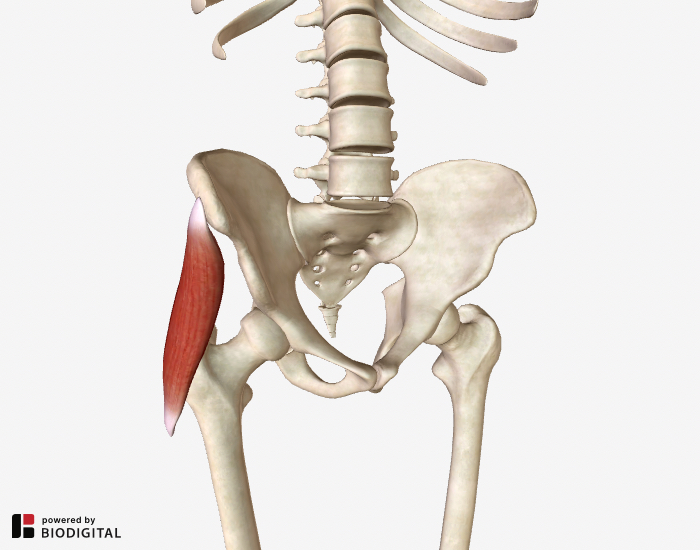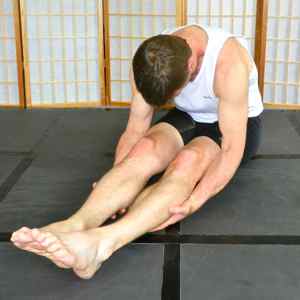The Tensor Fascia Lata (TFL) Muscle
A Major Cause of Unexplained Hip Pain

Recently I have begun to think of the tensor fascia lata muscle (TFL) as the “undiscovered country” of hip pain.
A week doesn’t seem to go by without my seeing a new client who says they’ve “tried everything” for hip pain.
• Physical therapy
• Acupuncture
• Deep Tissue Massage
And yet this complex muscle has rarely been mentioned as a potential root cause.
In these cases I often find that the tensor fascia lata muscle is extremely tight and tender to the touch and ischemic (low blood flow), and that direct manual release of the muscle brings relief of symptoms.
How the Tensor Fascia Lata (TFL) Causes Hip Pain
|
This muscle causes pain in two primary ways: Trigger points can then refer pain to other parts of the hip, the groin, the buttocks and even down the leg. |
 |
2) When the TFL becomes chronically contracted it can exert a mechanical strain on other muscles by distorting joint movement.
For example the gluteals or the piriformis muscle often suffer from an unnatural “pull” from an excessively tight TFL.
Pain, then, might be felt in one or more of the following areas…
|
What Causes Tensor Fascia Lata (TFL) Dysfunction?
I have been considering for a long time how the TFL becomes excessively tight and locked up (aka dysfunctional) and have concluded that there are two chief reasons…
- Weakness in the rectus femoris muscle: The rectus femoris, the top quadriceps muscle along the front of your thigh, is your secondary hip flexor (after the psoas and iliacus which are your primary hip flexors). And the rectus femoris muscle so often becomes weak as a result of the second reason for TFL dysfunction…
- Excessive tightness and shortening of the psoas and iliacus.
This is a common occurrence in many of us who sit for long hours at a desk and/or commuting in our cars. The primary hip flexors, the psoas and iliacus, are put into a shortened position when we’re sitting. This can cause them to adapt to the shortened position.
Chronic shortening of the primary hip flexors, the psoas and iliacus, can causes the secondary hip flexor, the rectus femoris, to atrophy.
I believe this occurs, in part, because short hip flexors will abbreviate your stride thus reducing a full and natural leg swing.
In runners who are heel strikers this problem can be even more exaggerated. The quadriceps, and especially the rectus femoris, are severely underused.
In the reaching stride characteristic of heel strikers, the leg extends and straightens at the knee as the foot hits the ground. This leg movement disables the quadriceps muscles.
An aside for runners: underuse of the quadriceps can be rectified using the “barefoot running technique.” This technique does not require one to actually run in bare feet but rather to…
- Adopt the upright, “running on hot coals” running method
- To use a running shoe without the beefed up heels of conventional running shoes which don’t allow your foot to go through its full range of motion.
I recommend the Merrell’s Pace Glove for Women or Merrell’s Trail Glove for Men (the shoe I run in).
Manual Treatment of TFL Muscle Using a Thera CAne
Other Strategies for treating dysfunction in the TFL
1) Maintaining flexibility in the entire hip
Stretching of the hip flexors and the entire hip and leg.
See Hip
Stretches for excellent video support.
2) Strengthening the quadriceps
I’m
not a fan of seated leg extensions on a weight machine to accomplish
this.
Much more effective are single leg squats. If squats are not
possible due to pain, then sitting against a wall is an excellent
strategy.
Your knees should be at a 90 degree or right angle. Otherwise it’s not stable for your knees.
Return to Top | Causes Index | Home Page
Anatomy Images Courtesy of BIODIGITAL

|
CURRENT COURSES POSTURAL BLUEPRINT FOR CORRECTING PELVIC TORSION: The Complete Guide To Restoring Pelvic Balance (2022) STRETCHING BLUEPRINT FOR PAIN RELIEF & BETTER FLEXIBILITY: The Complete Guide to Pain-Free Muscles Using Active Isolated Stretching (2020) HEALING THE HIDDEN ROOT OF PAIN: Self-Treatment for Iliopsoas Syndrome (2013) FREE MINI COURSE: Introduction to Active Isolated Stretching |



